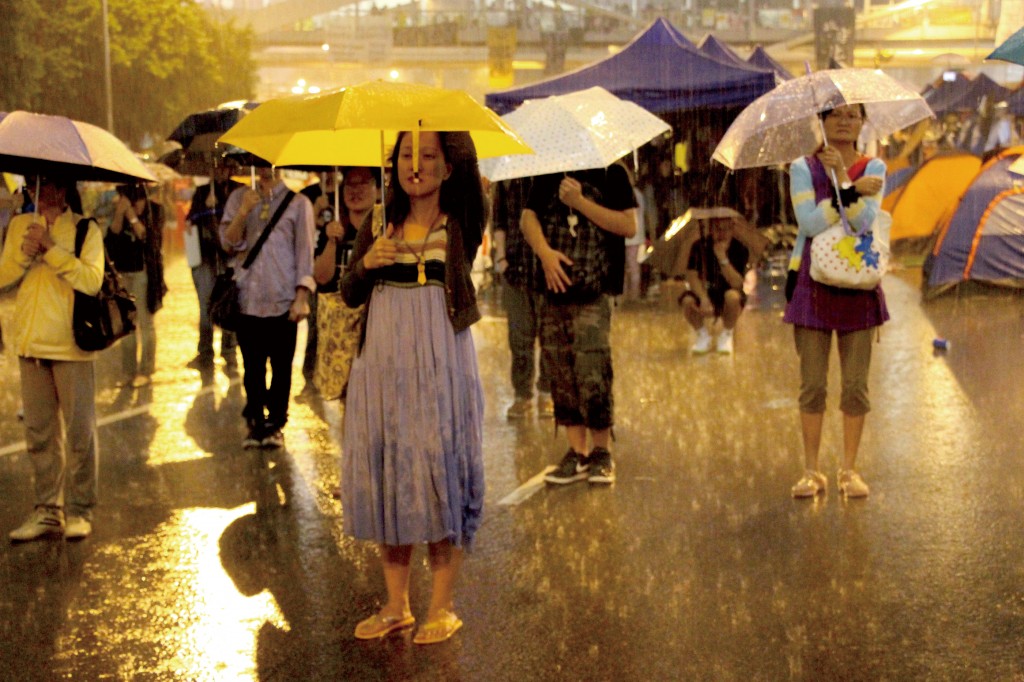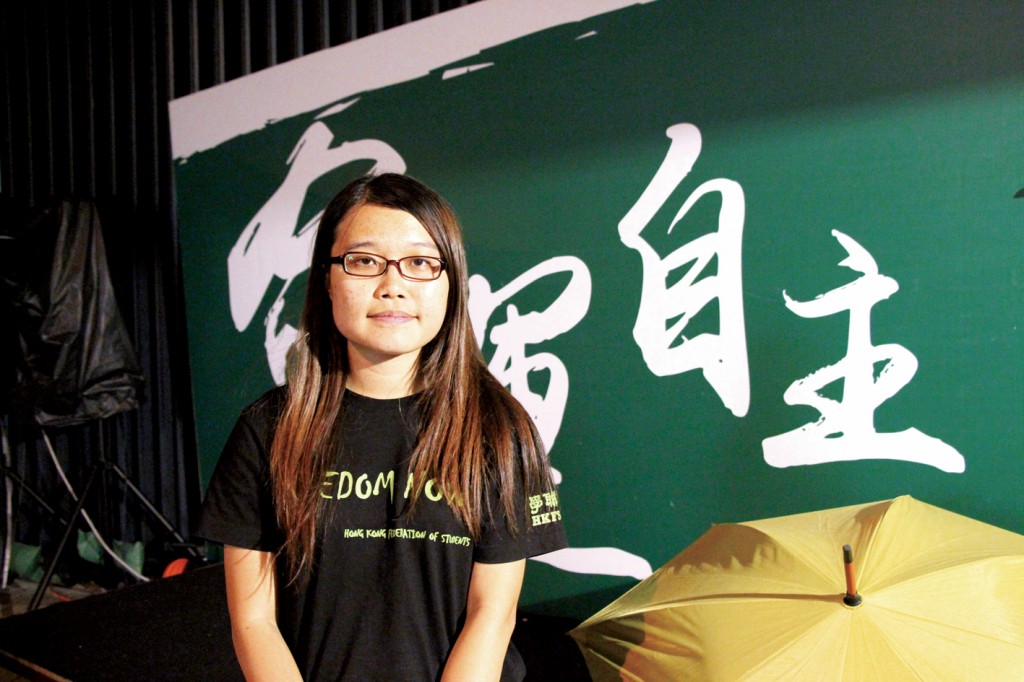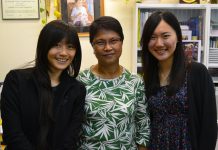Activists complain rumours distract and damage movement
By Kanis Leung & Jeffrey Loa
Hong Kong is a city with one of the highest smartphone penetration rates in the world, a relatively free-wheeling media and a growing online and alternative media scene. Add to that a large-scale social movement in the shape of the Occupy Movement and people hungry for news, and the result is a mass of information, some of it accurate, some of it less so and some of it downright false.
After the Occupy Movement began in late September, Facebook posts and WhatsApp messages about latest developments started to circulate wildly. As some readers and receivers click the “share” button without verifying the messages, rumours start to spread although their authenticity remains unverified.
On September 28, when the Hong Kong government fired tear gas at protesters in Admiralty, the rumours spread thick and fast. For example, the Hong Kong Federation of Students (HKFS) urged protesters to leave the streets that night because they had received information that police would shoot rubber bullets after midnight; some netizens said the People’s Liberation Army was coming through the Cross-Harbour Tunnel. The hundreds of thousands of protesters who gathered in Admiralty with goggles and masks checked their smartphones, reading and typing feverishly to process and exchange information.
Edwin Ty Pak-sing is a 20-year-old student studying in the Chinese University of Hong Kong. He was not physically in Admiralty on September 28 but he engaged in the battlefield at home with his mobile phone in his hands. Scanning through multiple recorded and text messages on WhatsApp that said police would use rubber bullets to disperse protesters, Ty was worried about his friends out on the streets. He sent out 10 to 20 such messages to warn the protesters. Even in hindsight, Ty says he would still share the unverified information even though it might be fake.
“If it is fake, at most you just believe in misinformation. But if it is true, it may have a great impact,” Ty says.

Ty says he did not share all the messages he received, but only those he believed made sense and did not have any negative impact. For instance, he saw rumours saying that Chinese military aircraft were flying over Hong Kong Airport, but he knew this was just daily flight practice and he dismissed the rumour as a joke.
Though Ty has developed his own method to decide if he should spread messages whether they are verified or not, some are concerned about the potential danger of spreading unverified information. Jonathan Wong Chun-him, a second year journalism student at the University of Hong Kong set up a Facebook page called LIVE: Verified Updates on September 28 to check out the veracity of rumours about the movement. He and his classmates working on the page believe that rumours can cause unnecessary panic.
The aim of the page is to post verified bilingual information about the movement. Some information comes from tip-offs and reports from citizens. Editors in the team will then call the relevant government departments or organisations to verify the information, while Wong and other team members post the information and verify rumours on the internet. The page now has around 113,000 likes.
Among the rumours the page has debunked is one that claimed protesters had used metal rods, metal racks and stones to attack the police. Wong’s team sent reporters to the scene to check it out and found it was untrue.
“They found those [metal rods and stones] were just rubbish and junk items. There was no such thing. But this was reported by Apple Daily at that time,” Wong says.
Misinformation does not just lead the media to make embarrassing mistakes, but it also affects the decisions made by organisers. On September 28, the Hong Kong Federation of Students (HKFS) was distressed to receive news that two students were injured by rubber bullets. Therefore, they called on all students to disperse and many students followed their instructions. It later turned out the information had been wrong. No rubber bullets had been fired.
Yvonne Leung Lai-kwok, an HKFS spokesperson, says the episode was a lesson in learning to better verify information with more diverse sources. They now send students to different occupied districts to get more authentic information.
Leung says although rumours can keep the protestors alert, she does not support the spread of rumours because a lot of time is consumed by discussing, checking and acting on unverified information. It distracts them from their original plans.
“It may not be a good thing. Eventually, it will be ‘cry wolf’. [Eventually] the number of people who come out because of the dangerous situations will decrease,” she says.

Although it may seem as if there have never been so many rumours flying around in Hong Kong as there have been during the Umbrella Movement, rumours are actually very common in social movements. Chen Yun-chung, associate professor of Cultural Studies at Lingnan University, who participated in the campaign to save Queen’s Pier and against the demolition of Choi Yuen Village, says political entities such as the government often use rumours to suppress social movements.
As an active supporter of the Occupy Movement, Chen has been attacked by political opponents through defamatory rumours. On September 5, a Facebook page called Brother Democracy published the fake minutes of a discussion in which Chen was supposed to have said the Occupy Central movement needed to shed blood and create another June Fourth crackdown in order to force the central government to make concessions on political reform.
What Chen had really discussed was his thoughts about Hong Kong’s constitutional arrangements after Occupy Central. According to the fake minutes, Yvonne Leung Lai-kwok from HKFS, who also attended the meeting, said the federation would encourage foreign exchange students to join Occupy Central and that media tycoon Jimmy Lai Chee-ying had bankrolled the class boycott. An American PhD student at City University was portrayed as a spy from the US Consulate General who said the consulate would help student leaders to study overseas after Occupy Central.
All of these statements have been denied by people who attended the meeting. And the US Consulate has called those parts that relate to the consulate fabrications. Chen Yun-chung says the rumours have the effect of dividing members of the pro-democratic camp, making them feel exhausted and battering their confidence and credibility. He thinks organisers of the Occupy Movement are unable to focus solely on their work as they have to deal with the risks coming from rumours. “HKFS holds meetings every day, and people blame them for not talking to the citizens. They don’t have time because risk management has already exhausted them a lot,” Chen says.
With many years of experience in social movements under his belt, Chen has learnt to use “triangulation” as a way to judge whether a rumour is true or not. He only believes in information that comes from more than three credible sources. This idea of triangulation is also adopted by journalists and mainstream media, although in a more rigorous and sceptical way.
Veteran journalist Allan Au Ka-lun says the proper way to deal with rumours is to first investigate their source. Whether the source has a vested interest is the major concern. After that, Au will proceed to fact-check with other sources by triangulation. He points to the case of a woman who complained on a phone-in radio programme that the traffic jam in the Cross-Harbour Tunnel caused by the Occupy Movement prevented her from bidding farewell to her dying daughter-in-law. Au says this well-constructed misinformation was disseminated to the public quickly through WhatsApp right after the programme.
Au says the host could have asked more questions and checked whether there was an official record of a traffic jam at the time. It would be easy to find out whether there was a problem with the Cross-Harbour Tunnel that day. Au says the caller was suspicious and questions whether there was a hidden political agenda behind the rumour aimed at discrediting the social movement.
“But many mainstream media published the information without checking it, That’s why we need to fact-check. You need to ask different sources and see whether they all point to the same thing,” Au says.
Having worked in the media for more than 20 years, Au generally holds a negative view about rumours. “Journalists ask for the truth and the information people obtain should be true. If it’s a rumour, no matter what it is, where it is set, it is negative,” he says.
However, as an associate professor of anthropology in the Chinese University of Hong Kong, Joseph Bosco has a more neutral view of rumours. “Rumours are also attempts to get at the truth. So you tend to have rumours where people don’t know precisely what’s going on and the situation is really serious,” Bosco says.
Bosco explains that rumours occur because there is uncertainty and because they resonate with our social values. He says in the Umbrella Movement, rumours arise because the government is not transparent and the police do not announce their actions. Out of anxiety and the social values against violence, people spread rumours in order to get the truth. He says rumours actually provide possibilities for people to calculate what they may face and how much they are willing to be engaged in a movement.
“We all spread rumours,” Bosco says, “It’s not because people are not responsible or evil, it’s just part of the communication.”
Bosco sees rumours as a part of exchanging information but he thinks the media should investigate them to see the extent to which they are true and report them accordingly. He says some rumours can turn out to be true and he trusts experienced journalists to handle them appropriately.
Although rumours can be true, their negative impact, such as misleading organisers as well as the public in social movements, cannot be neglected and there are those who are trying to figure out a solution to minimise the harm. Chris Shen Fei, an assistant professor of media and communication from the City University of Hong Kong, points out that misinformation is very common in political campaigns. “Wherever there is politics, there is misinformation,” he says.
Rumours seem to be very difficult to stop. In China, there is a law forbidding the spread of rumours. However, imprisonment cannot stop rumours from flying around once they spread.
Shen believes Hong Kong can learn from the Fact Check project set up by the University of Pennsylvania and Annenberg School of Communication. Funded by donations, it employs scholars and journalists to check and monitor the factual accuracy of news and information released every day by politicians and news outlets.
Shen says universities in Hong Kong should also take up this role as they are generally politically neutral and have abundant intellectual resources. But he concedes it would require a lot of funds to set up. “Here [in Hong Kong], it’s difficult to find money. The money itself can be politicised, and then the organisation will be polluted if it has a political agenda.”
Still, Shen believes the system is worth trying and would be beneficial to Hong Kong as it would raise media literacy in the general public and lift the quality of local journalism. “I think that would be a contribution to society, to Hong Kong democracy,” he says.
By Elaine Tsang











































